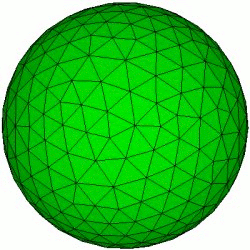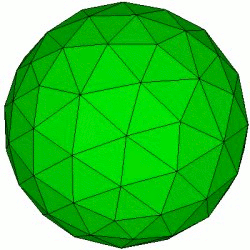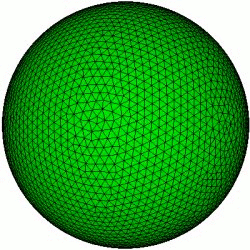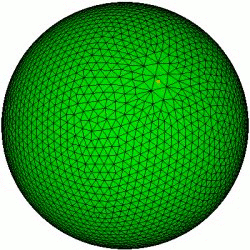
Cubit 16.16 User Documentation

Note: This feature is under development. The command to enable or disable features under development is:
Set Developer Commands {On|OFF}
CUBIT provides the capability for coarsening triangle surface meshes. Triangle coarsening uses a technique known as edge collapsing to coarsen a mesh. With this technique, triangle edges are selectively eliminated from the mesh until the specified criteria have been met. The following commands will coarsen an existing triangle surface mesh:
Coarsen {Node|Edge|Tri} <range> {Factor|Size <double> [Bias <double>]} [Depth <int>|Radius <double>] [Sizing_Function] [no_smooth]
Coarsen {Vertex|Curve|Surface} <range> {Factor|Size<double> [Bias<double>]} [Depth<int>|Radius<double>] [Sizing_Function] [no_smooth]
Important: These commands are currently implemented only for triangle shaped elements.
To use these commands, first select mesh or geometric entities at which you would like to perform coarsening. Coarsening operations will be applied to all mesh entities associated with or within proximity of the entities. The all keyword may be used to uniformly coarsen all triangles in the model.
Following is a description of each of the coarsen options:
Defines the approximate size relative to the existing edge lengths for which the coarsening will be applied. For example, a factor of 2 will attempt to make every edge length within the specified region approximately twice the size. A factor of 3 will make everything three times the size. Valid input values for factor must be greater than 1. Figure 1 shows an example where a coarsening factor of 2 was applied


Figure 1. Example of coarsening all triangles with a factor of 2.
The Size and Bias options are useful when a specific element size is desired at a known location. This might be used for locally coarsening around a vertex or curve. The Bias argument can be used with the Size option to define the rate at which the element sizes will change to meet the existing element sizes on the model. Valid input values for Bias are greater than 1.0 and represent the maximum change in element size from one element to the next. Since coarsening is a discrete operation, the Size and Bias options can only approximate the desired input values. This may cause apparent discontinuities in the element sizes. Using the default smooth option can lessen this effect. It should also be noted that the Size option is exclusive of the Factor option. Either Factor or Size can be specified, but not both.
The Depth option permits the user to specify how many elements away from the specified entity will also be coarsened. Default Depth is 1.


Figure 2. Coarsening performed at a node with factor = 3 and depth = 3
Instead of specifying the number of elements to describe how far to propagate the coarsening, a real Radius may be entered.
Coarsening may also be controlled by a sizing function. CUBIT uses sizing functions to control the local density of a mesh. Various options for setting up a sizing function are provided, including importing scalar field data from an exodus file. In order to use this option, a sizing function must first be specified on the surface on which the coarsening will be applied. See Adaptive Meshing for a description of how to define a sizing function.
The default mode for coarsening operations is to perform smoothing after coarsening the elements. This will generally provide better quality elements. In some cases it may be necessary to retain the original node locations after coarsening. The no_smooth option provides this capability.